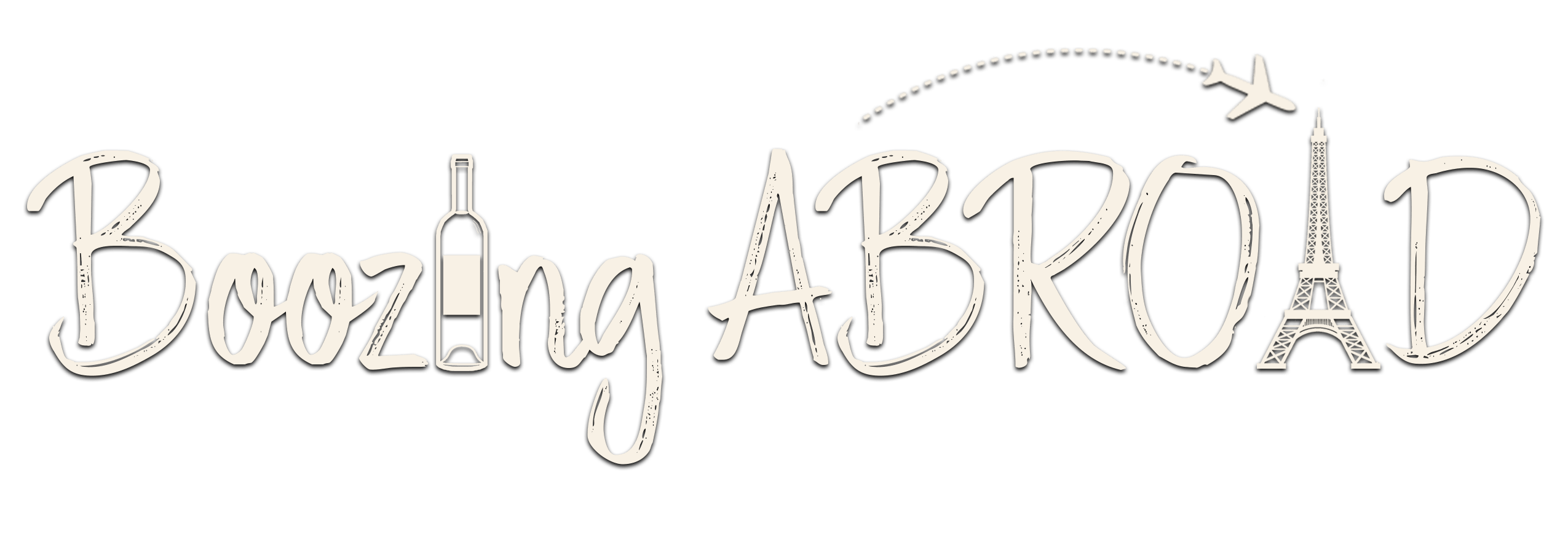Barolo Wine Tasting Weekend in La Morra, Piedmont, Italy
Tucked into the hills of Piedmont, Italy, sits La Morra, a village so picturesque it looks painted onto the landscape. Beyond its charm, La Morra is best known for producing some of the most famous wines in the world: Barolo, often called the “king of wines.”
We spent a weekend exploring the Langhe region, tasting Barolo wines, learning about Nebbiolo grapes, and soaking in the breathtaking scenery that makes this an unforgettable part of Italy.
Short on Time? Here are the key takeaways:
- Barolo Wine Basics: True Barolo comes from Piedmont, is made with 100% Nebbiolo grapes, and ages at least 38 months (or 62 months for a Riserva).
- Historic Barolo Towns: La Morra and Barolo are must-visit Italian towns with charming streets, panoramic Langhe vineyards, and centuries of winemaking history.
- Bonus Wine Experiences: Castello di Grinzane Cavour offers a castle tour with wine tastings, showcasing the heritage of Piedmont viticulture.
- Planning Tips: Allocate at least 2 hours per winery, wear comfortable shoes for walking vineyards, and savor every sip because it’s a weekend worth lingering over.
Boozing Abroad contains affiliate links throughout the site. If you choose to purchase items through these links, we will earn a small commission at NO extra cost to you. Read the full disclosure policy here**
A Quick History of Barolo Wine
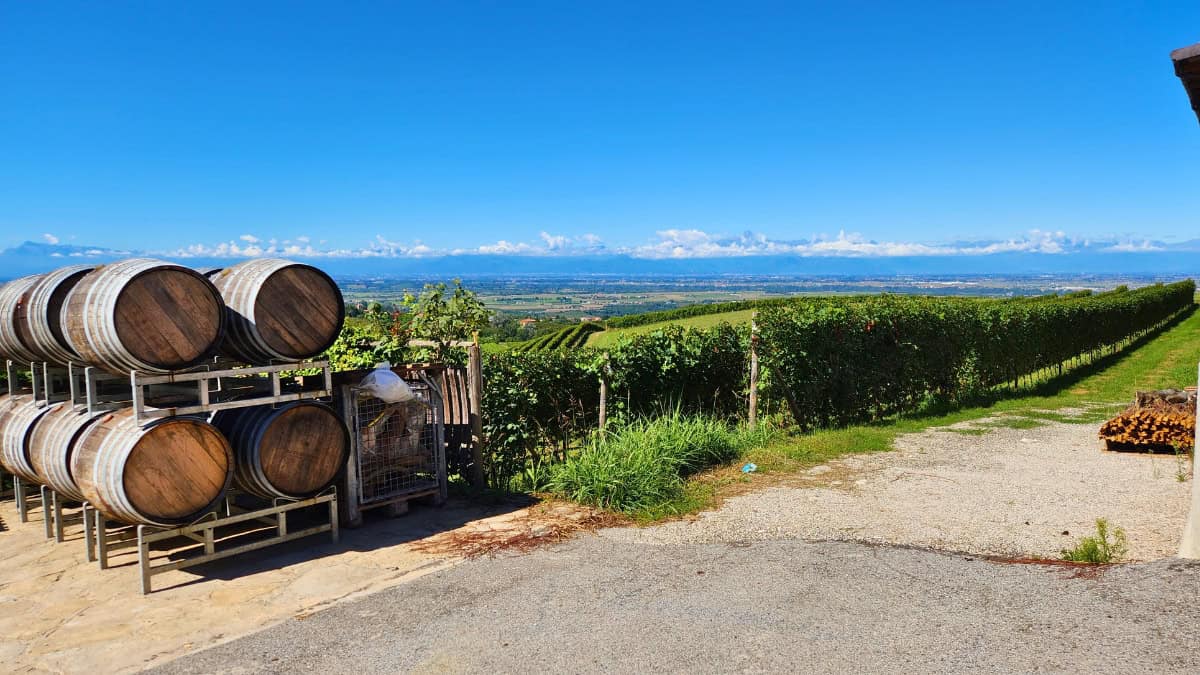
Before diving into tastings, it helps to understand what makes Barolo so legendary. Today, Barolo is known as a bold and complex red, but its story starts quite differently.
In the early 1800s, Nebbiolo grapes, the only grape permitted in Barolo wine, were often used to make a sweet, dessert-style wine. Everything changed when French winemaker Louis Oudart collaborated with the Marchesa of Barolo. Together, they introduced modern techniques that transformed Barolo into a dry, structured wine fit for royal courts across Europe. That’s how it earned its title: “the wine of kings, and the king of wines.”
What Makes Barolo Wine So Special?
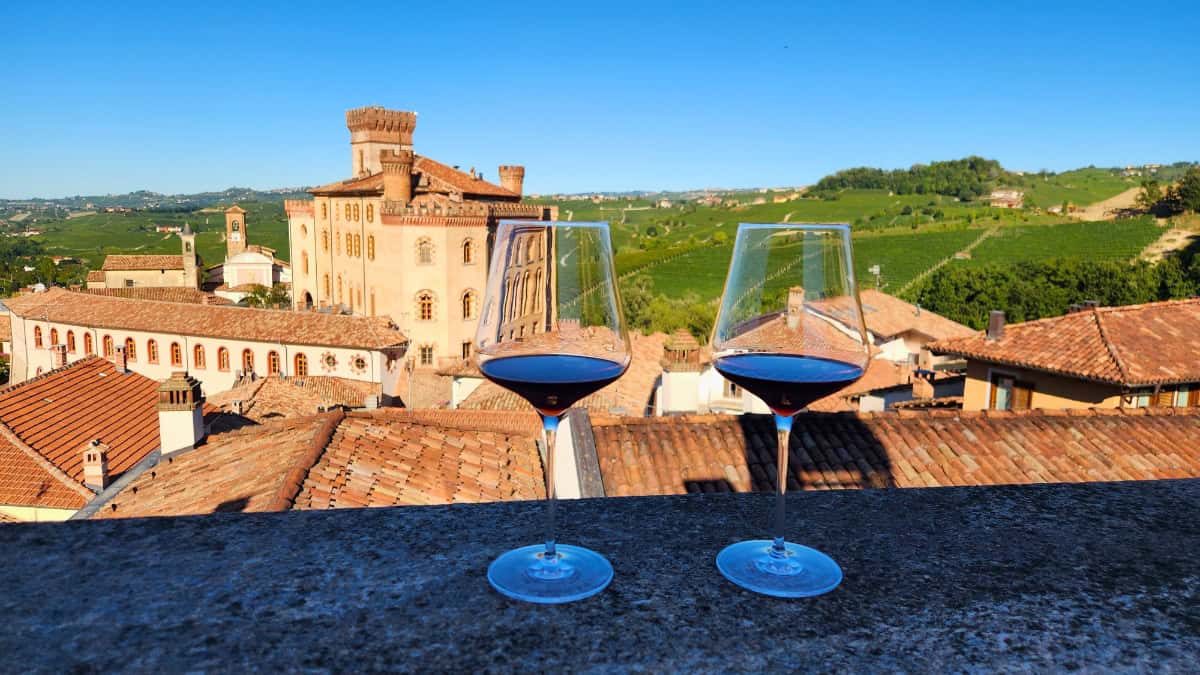
When you think about Barolo wine tasting in Italy, it’s important to understand what actually makes a wine a true Barolo. First, it must come from a very specific part of Piedmont – the Barolo region in the Langhe hills. If it’s not from this tiny corner of the world, it simply isn’t Barolo.
Second, Barolo is always made from 100% Nebbiolo grapes. There’s no blending or shortcuts allowed.
And third, patience is everything: Barolo must age at least 38 months, with at least 18 of those months in oak barrels. For a Barolo Riserva, that aging process stretches to a full 62 months.
Producing Barolo isn’t easy. Nebbiolo is famously fussy: it ripens late, needs the right soil, and only thrives in specific Piedmont microclimates. On top of that, regulations require that lengthy aging timeframe before release. These factors make Barolo rare, expensive, and absolutely worth it.
Only 11 communes in the Langhe region are permitted to produce true Barolo. Each village has its own terroir, meaning that wines made just a few kilometers apart can taste completely different.
The Langhe: More Than Just Wine
The Langhe region is a UNESCO World Heritage site for good reason. Rolling vineyard-covered hills, medieval villages, truffles, hazelnuts, and castles create a dreamy landscape that feels like stepping into a postcard.
Even the name Nebbiolo connects to this terroir: it comes from nebbia, the Italian word for fog. These chalky, fog-laden hills give the grape the perfect growing conditions. Walking through the Langhe feels like walking through centuries of tradition, where families have been refining their craft for generations.
Map of our Barolo Wine Tasting Weekend
HOW TO USE THIS MAP: To view the layers and see the names of the places on this map, click the tab in the top left corner. You can select the check marks to show or hide certain layers. If you select the icons on the map, you will get more information about the point of interest.
HOW TO SAVE THIS MAP: If you select the star icon next to the map name, you can save this map to your Google Maps account. To view it, open Google Maps in desktop or on your phone, select the menu button, go to “Your Places,” scroll to the right to Maps, and you will see this map.
Cantina Mascarello Michele & Figli: A Century of Tradition
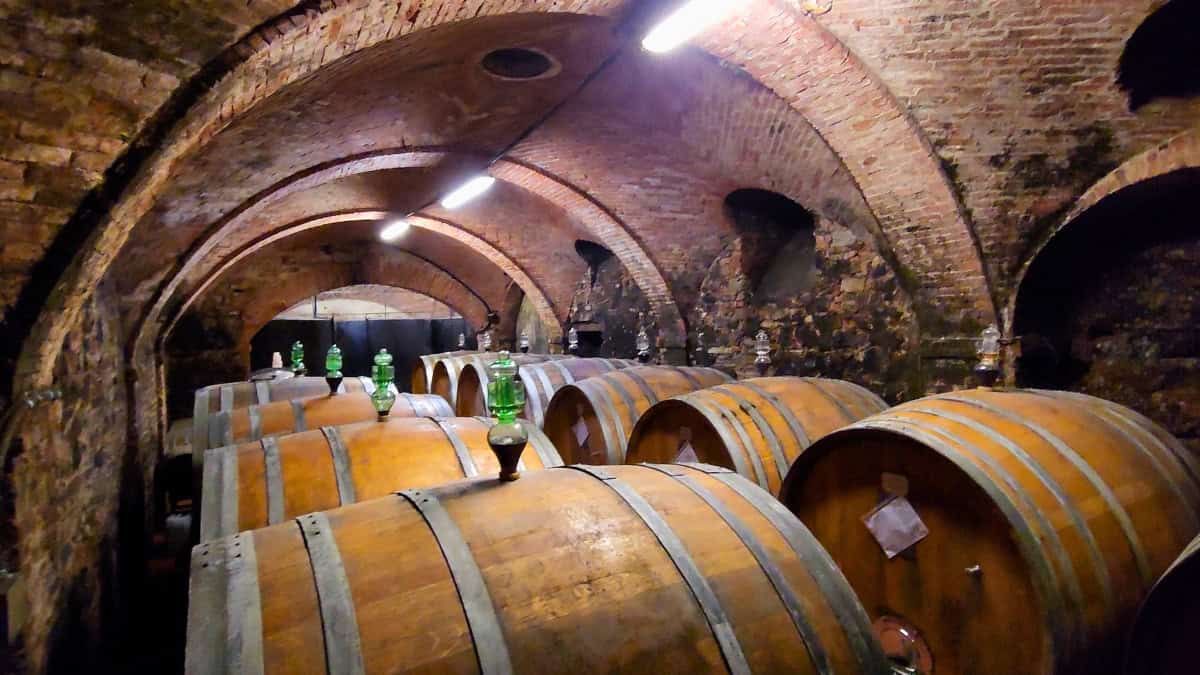
One of our favorite stops in Barolo was Cantina Mascarello Michele & Figli, a winery that has been part of the Langhe landscape since 1927. What makes its story even more remarkable is that it was founded by Maria Mascarello, a woman running a winery in the 1920s, something almost unheard of at the time. Her boldness set the tone for generations that followed, and nearly a century later, the winery remains family-run, staying true to its philosophy of crafting small-batch, high-quality wines for true wine lovers.
Beneath an 18th-century house, massive oak barrels line the underground halls where Barolo patiently ages. Tasting wine directly above these cellars feels like sipping straight from history.
For €35 per person, we enjoyed a guided tasting of six wines, which quickly turned into nine. Alessandro, our host, walked us through their portfolio, starting with a young white wine and building up to the iconic Barolo Classico.
The highlight for us was a side-by-side comparison of two Barberas from the same vintage and grape but aged in different barrels. The larger barrel produced a softer, more approachable wine, and definitely a crowd pleaser. The smaller barrel, on the other hand, delivered a bolder, more complex Barbera with more pronounced oak influence. Tasting them back-to-back really showed how aging vessels shape flavor.
Then came the star: Barolo Riserva 2018. To earn the “Riserva” label, Barolo must age at least five years and two months. Compared to the regular Barolo, the Riserva was slightly less tannic and more approachable, yet still full of depth and elegance.
Quick Sips Summary
- Founded: 1927 by Maria Mascarello, a pioneering woman in winemaking.
- Experience: €35 tasting with 6 wines (we ended up with 9!), including a side-by-side Barbera and their iconic Barolo Riserva.
- Highlights: Historic cellar beneath an 18th-century house, intimate family-run atmosphere, generous pours.
- Our Pick: The Barbera aged in large barrels – smooth, approachable, and a true crowd-pleaser.
Poderi Marcarini
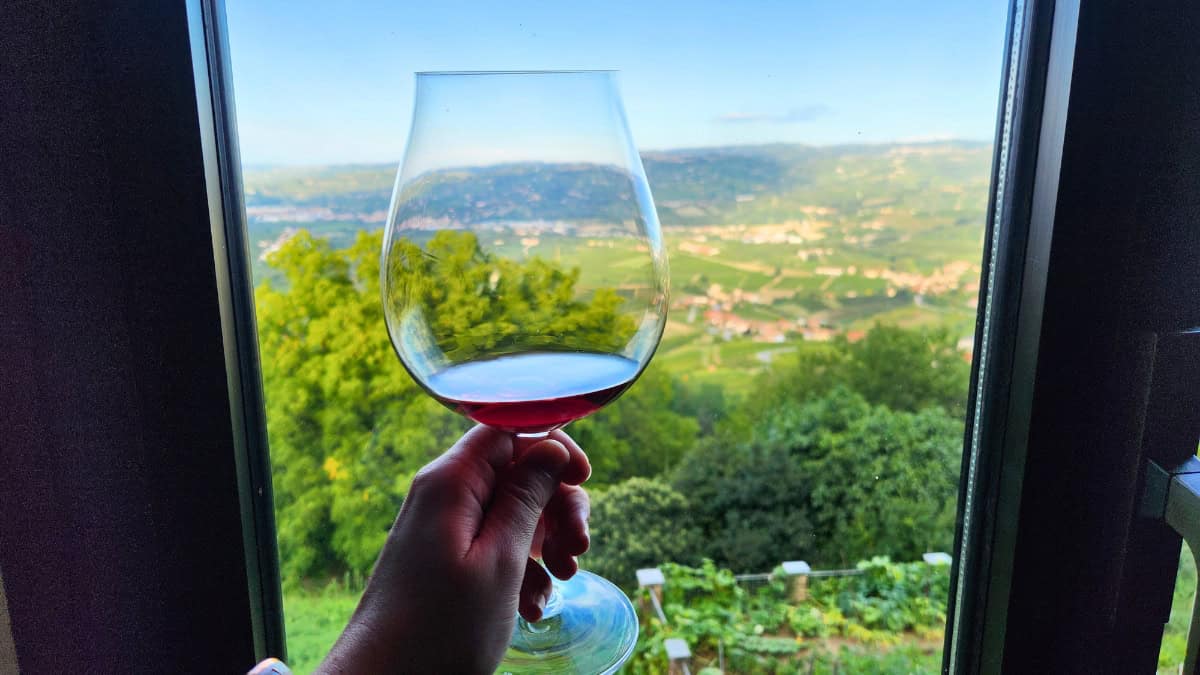
Our second stop on this Barolo wine tasting itinerary was Poderi Marcarini, a family-run winery in La Morra with more than six generations of history. The story began in the mid-19th century with General Sebastiano Marcarini, who first made Nebbiolo as Barolo for his own table and for prestigious receptions at the Savoy court.
Over time, the family became trailblazers in the region, from helping form the Consortium of Typical Wines of Barolo and Barbaresco in the 1930s to pioneering vineyard-specific labeling. In the 1990s, Luisa and her husband Manuel expanded the estate and modernized production, while staying deeply rooted in the family tradition. Today, the next generation continues that legacy.
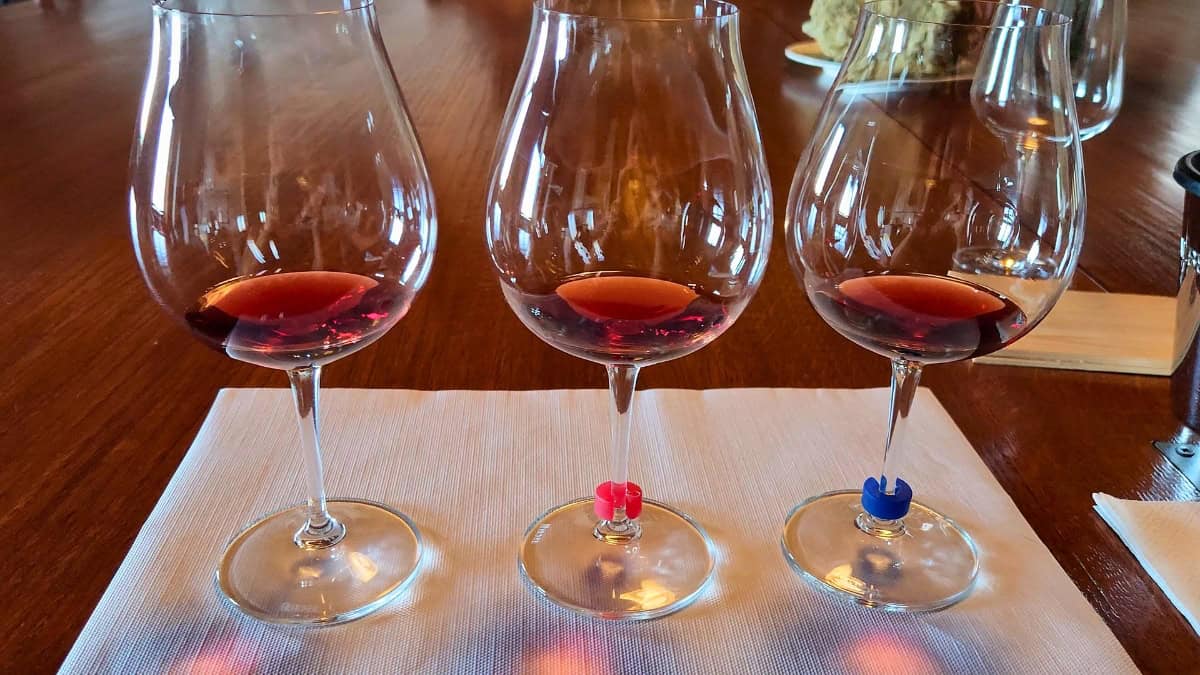
Our tasting here included six wines: one white, a Nebbiolo, a Barbera, and then three different Barolos to compare side by side. It was fascinating to see how much the vineyard origin shaped the wine’s character. One was from a single vineyard, another from a different site, and the third was a blend of the two. The blend was our favorite: complex, balanced, and incredibly drinkable – and of course, that’s the bottle we took home.
This tasting reinforced why a trip to Piedmont is one of the best wine experiences in Italy. Poderi Marcarini delivers not only history and authenticity, but also some of the best Barolo wines you’ll ever sip.
Quick Sips Summary
- Founded: Mid-19th century, with six generations shaping Barolo history.
- Experience: Tasting of 6 wines, including 3 Barolos compared side by side.
Highlights: Strong family legacy, vineyard-specific Barolos, and a cozy tasting room in La Morra. - Our Pick: The vineyard blend Barolo, perfectly balanced and the bottle we had to bring home.
Dosio Vigneti: Barolo with a View
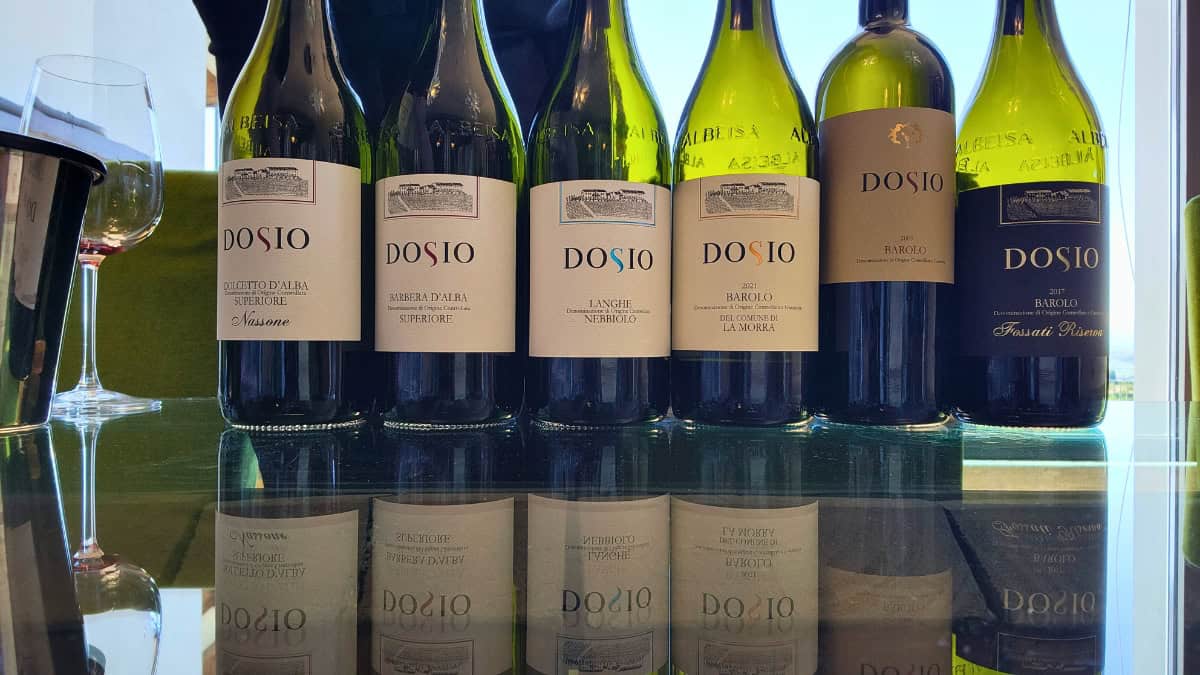
Perched on the ridge of La Morra, Dosio Vigneti has roots tracing back to the mid-1800s. The story really took shape in 1974, when the Dosio family transformed a hillside farmhouse into the winery we see today. Since then, the estate has passed through different hands, but one thing has never changed: a dedication to authenticity, tradition, and producing wines that honor the land.
With about 15 hectares of vines, Dosio sources grapes from some of the most celebrated Barolo vineyards. Just strolling through the rows, you can feel how the altitude, soils, and sunshine create wines with their own distinct character. It’s the perfect reminder that Barolo is as much about terroir as it is about tradition.
We booked the Discovering Dosio Tour, which started with a vineyard walk and a little history lesson, followed by a cellar tour that brought us into the refining rooms. Naturally, it all ended with the highlight: a guided tasting of their wines.
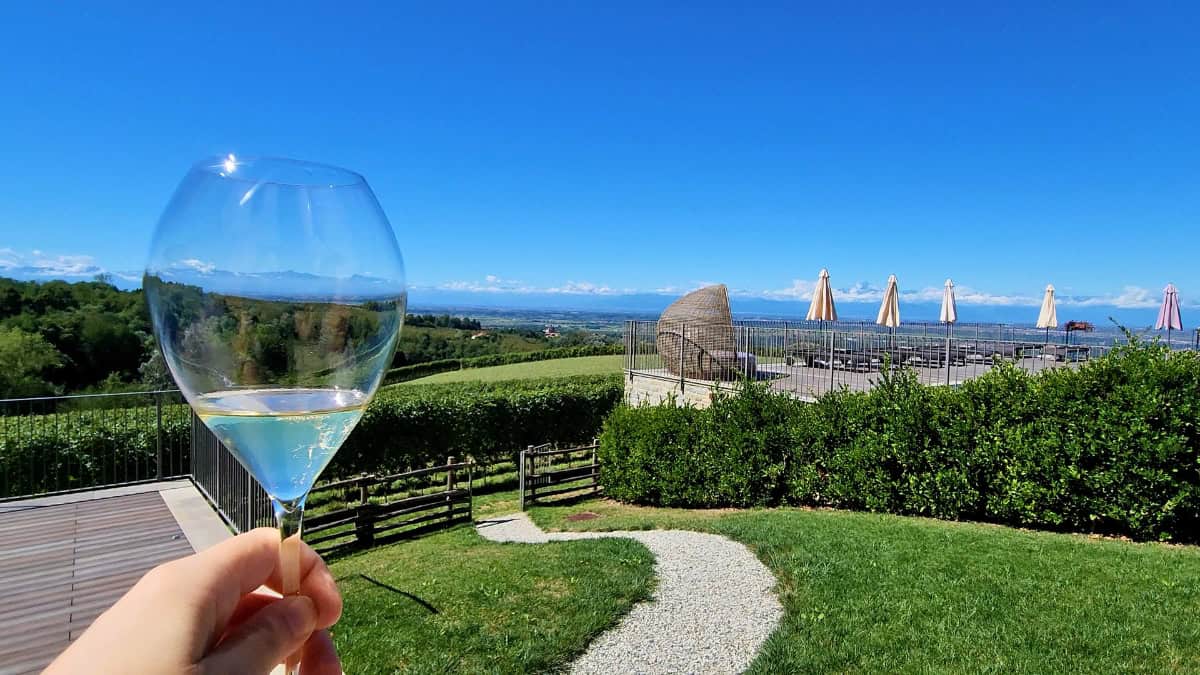
In true Italian fashion, the experience kicked off with bubbles, because when in Italy, sparkling wine is always the right answer. Then came what was supposed to be a four-wine tasting that stretched into seven (no complaints here). From crisp beginnings to three standout Barolos: including a 2009 bottle we couldn’t leave without – this stop overdelivered.
And the views? Absolutely breathtaking. With sweeping panoramas that even stretched to the French Alps, this may have been the most stunning backdrop of our entire trip.
After nearly two hours (on what was planned as a one-hour tour), we left with full glasses, full hearts, and another bottle in hand. Dosio isn’t just about wine – it’s an experience that blends history, landscape, and a deep respect for Piedmont’s winemaking heritage.
Quick Sips Summary
- Founded: Roots in the mid-1800s, winery established in 1974.
- Experience: Discovering Dosio Tour with vineyard walk, cellar tour, and a tasting that grew from 4 to 7 wines.
- Highlights: Incredible views of the vineyards and French Alps, history-rich setting, and a deep dive into winemaking.
- Our Pick: A 2009 Barolo: complex, elegant, and the bottle we proudly carried out.
Borgogno Winery in the Heart of Barolo
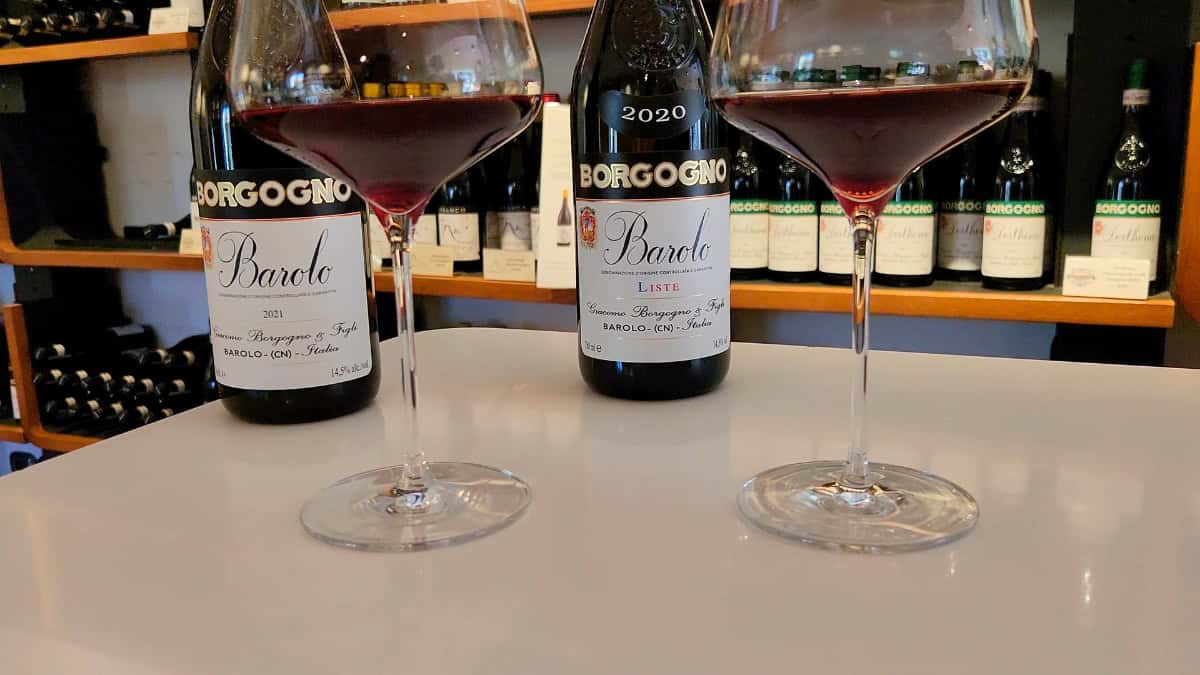
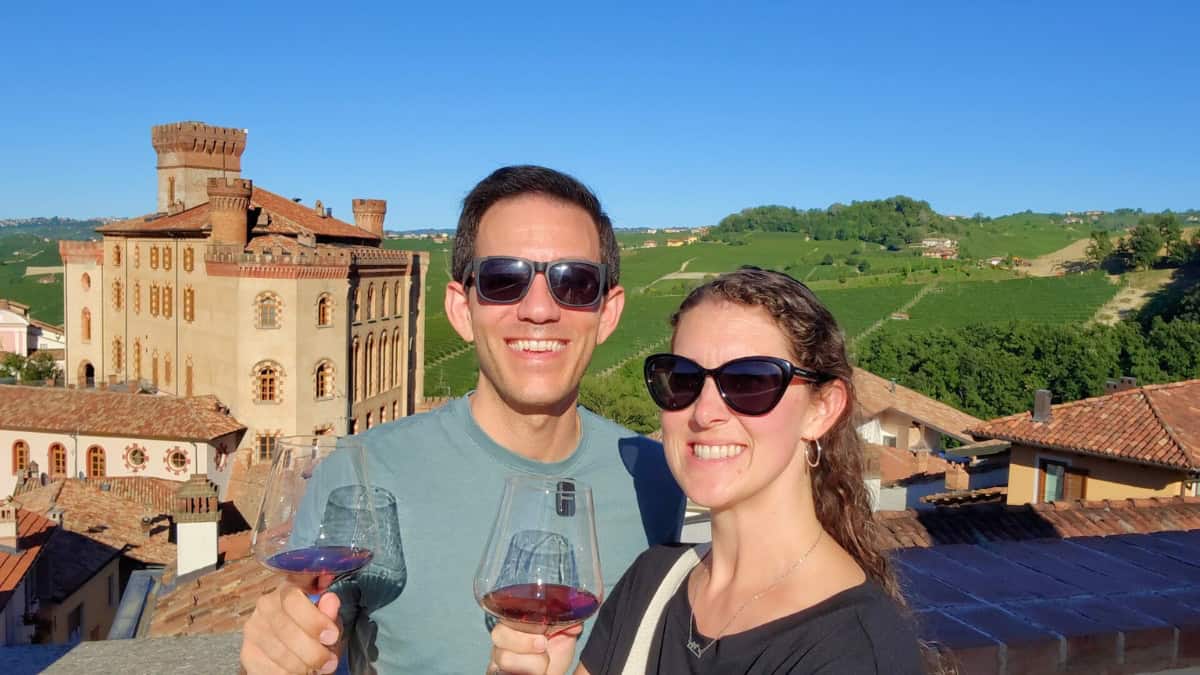
Our fourth tasting took us straight into the town of Barolo itself, the original home of the wine we’d been sipping all weekend. The town may be tiny, but its reputation looms large. This is where the story of Barolo wine began, and where some of the most historic producers still make their mark.
One of those producers is Borgogno, a name synonymous with tradition in Piedmont. Founded in 1761, Borgogno is often considered the oldest continuously operating winery in Barolo. For centuries, they’ve embraced a philosophy of doing things “the old way” – long fermentations, aging in massive Slavonian oak casks, and patience above all else.
Their dedication to tradition hasn’t gone unnoticed. Borgogno Barolos were served at the 1861 unification of Italy celebrations in Turin, and the winery has continued to play a central role in shaping Barolo’s global reputation. Today, Borgogno remains committed to authentic, time-honored methods while quietly adapting to modern sustainability practices.
At the tasting, we tried both the Barolo Classico and a single-vineyard expression. The Classico was elegant and approachable, with a balance of fruit and tannins that made it easy to love.
The single-vineyard wine that Chris ordered leaned more structured and nuanced, showing off the depth Nebbiolo can achieve when tied to a specific plot of land. Both were outstanding – understated, complex, and absolutely delicious.
But what truly surprised us was their rooftop terrace overlooking the rolling Langhe hills. We went upstairs with a glass in hand to take in the views of vineyards, medieval villages, and the iconic Barolo landscape.
Needless to say, we left with a bottle in hand. Borgogno is one of those wineries that proves why Barolo truly earns its title as the “King of Wines.”
Quick Sips Summary
- Founded: 1761, making it one of the oldest wineries in Barolo.
- Style: Traditional, with long fermentations and aging in large Slavonian oak casks.
- History Highlight: Borgogno Barolo was served at the 1861 unification of Italy celebrations in Turin.
- Tasting Experience: Elegant Barolo Classico and a structured single-vineyard Nebbiolo.
- Our Pick: The Classico: balanced, approachable, and a perfect expression of Barolo tradition.
Bonus Stop: Castello di Grinzane Cavour
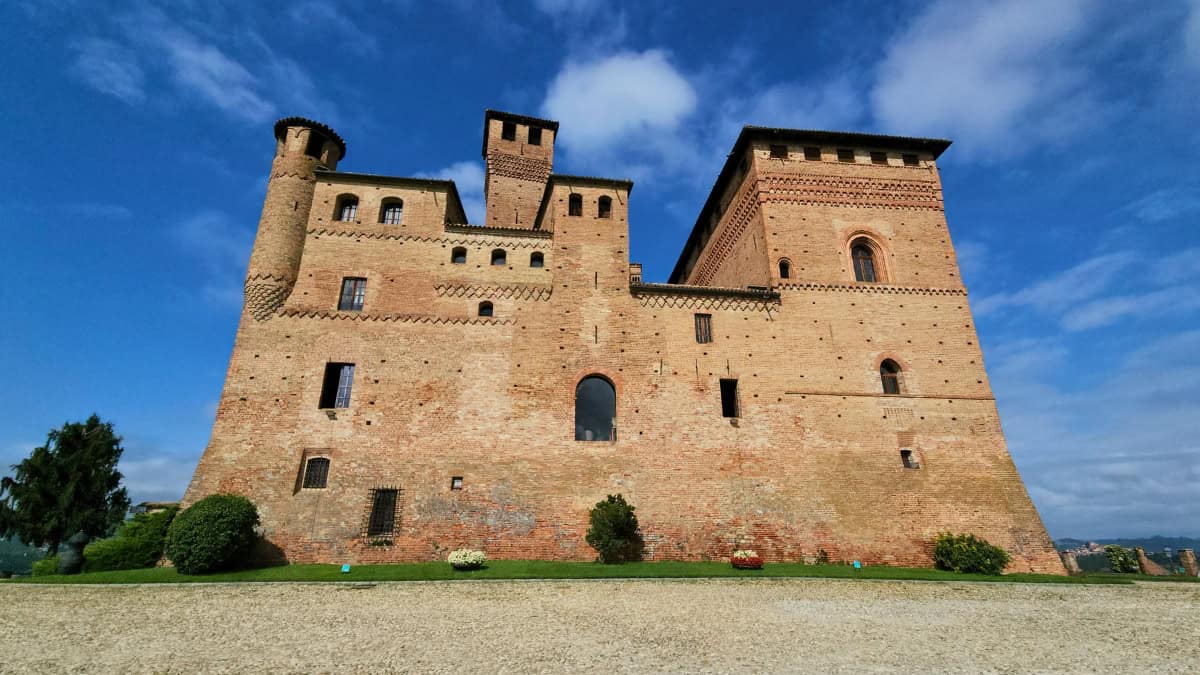
Before diving into our scheduled Barolo wine tastings, we had a little extra time on the drive up from Bologna. And in true “us” fashion, that meant only one thing: a castle detour.
Perched on a hilltop with sweeping views of the Langhe, Castello di Grinzane Cavour feels like stepping into a real-life fairy tale. Built in the 14th century, the castle later became the home of Camillo Benso, Count of Cavour, one of Italy’s founding fathers and an early champion of Barolo wine. He used the castle as his base for experimenting with Nebbiolo grapes and promoting Piedmont wines across Europe. In many ways, he’s the reason Barolo rose to international fame as the “King of Wines.”
Today, the castle houses a wine museum, tasting rooms, and even a library dedicated to Italian viticulture. We wandered through exhibits on barrel making, distilling, and grape varieties across the region and came away even more impressed by just how deeply wine runs through Piedmont’s history.
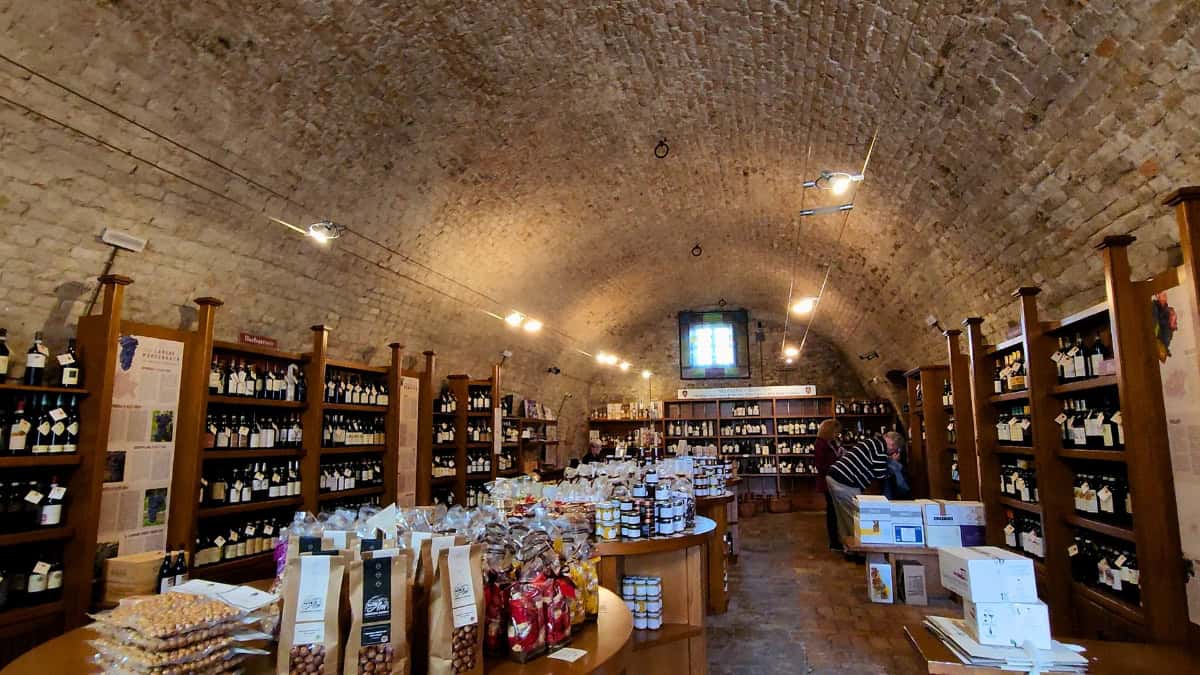
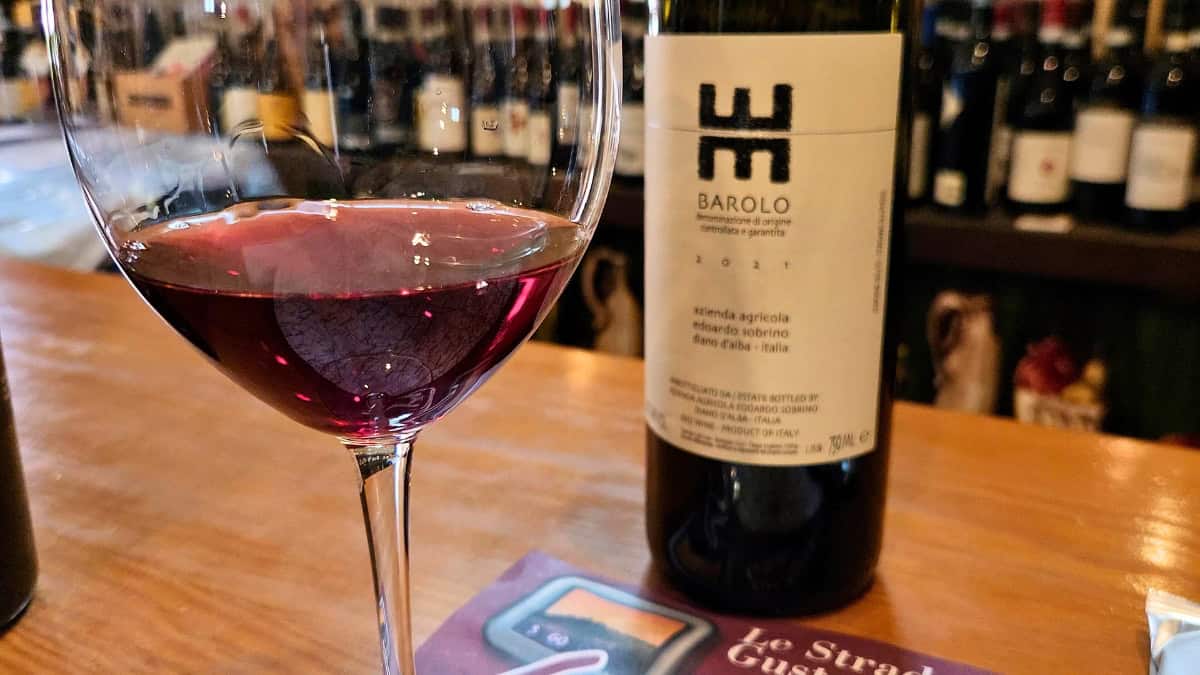
Of course, no castle visit would be complete without a glass in hand. Inside the enoteca, we tried both a Barolo and a Nebbiolo, side by side. Same grape, two very different expressions: the Barolo was bold and structured, while the Nebbiolo was lighter and more delicate. Not bad for a morning tasting in a castle basement!
At just €8 to visit, Castello di Grinzane Cavour is a fantastic add-on if you want a mix of history, culture, and wine before your vineyard stops. Parking is available right below the castle on Via Bricco, making it an easy detour.
Quick Sips Summary
- Founded: 14th century; home of Count Camillo Benso di Cavour, a key figure in Barolo’s history.
- Experience: €8 entry fee, with a wine museum, tasting rooms, and panoramic Langhe views.
- Highlights: Rare chance to sip Barolo inside a medieval castle.
- Our Pick: Side-by-side tasting of Barolo and Nebbiolo: a perfect comparison of power vs. elegance.
Watch it on YouTube
Experience the sights, sounds, and flavors of Barolo and the Langhe region in our full Barolo wine tasting video. This video brings our weekend in Piedmont to life.
Our Barolo wine tasting weekend in Piedmont was unforgettable. Poderi Marcarini stood out for its combination of exceptional wine and expert guidance, while rooftop terraces and vineyard walks offered unexpected beauty. Whether you’re a seasoned wine lover or a beginner, a Barolo wine tasting weekend in the Langhe is a must.
Still Thirsty? Check out some more of our Italy travel guides below:
- Mangialonga in La Morra: The Ultimate Walking Food & Wine Adventure in Piemonte
- 2 days in Milan, Italy
- Ultimate Road Trip to Tuscany: A Wine Lover’s Paradise
- Chianti Wine Tours from Florence
- Best Day Trips from Bologna, Italy
- How to read an Italian Wine Label
Ready to visit the Piedmont Wine Region? Read hotel reviews on TripAdvisor then book your room here!
But where do we personally recommend? Blueberry Rooms were simple, cozy and in the best location!
Don’t forget to pick up a travel guidebook for your other adventures.
Love this guide? Have questions? Get in touch with us on Facebook | YouTube | Instagram | Pinterest
